FLOOR PLAN GENERATOR // DEEP CONVOLUTIONAL GAN
The use of Artificial Intelligence is expanding over the architecture field. It is inevitable to think about it as a tool for designing. Following this line, the goal of this study is to generate schematic floor plan configurations based on the relationship between the spaces. This is the background to explore and study Deep Convolutional Generative Adversarial Networks (DCGAN), which is used to generate the floor plans.
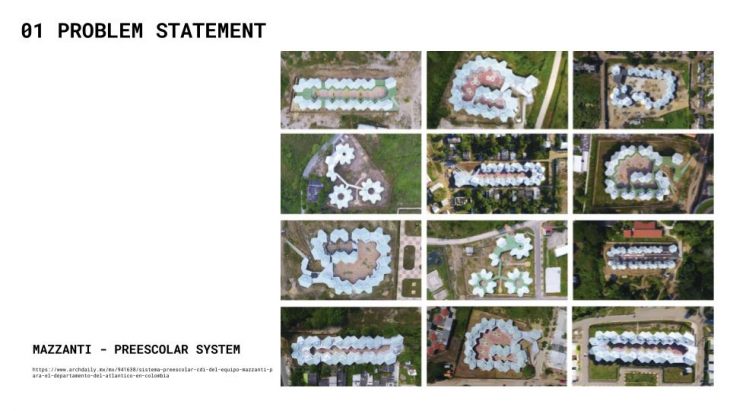
As a reference to generate the initial input dataset, it was taken the Preescolar System designed by Giancarlo Mazzanti. In this system, some different school modules are aggregated in a systematic way, adapting to some specific conditions.
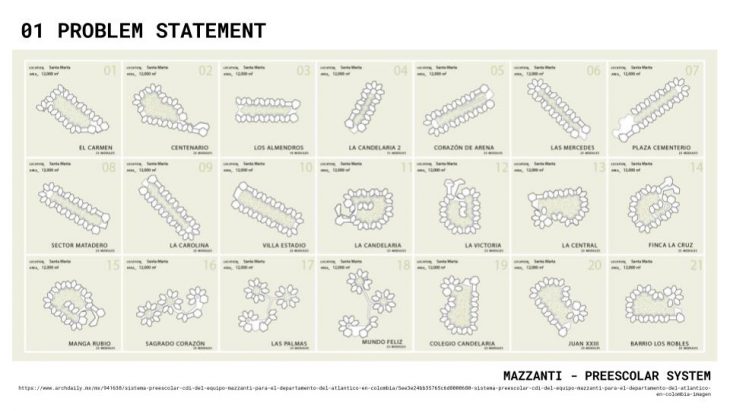
In the same way, in this project different modules representing each of the spaces of a building, are aggregated using WASP (a plugin for Grasshopper). These spaces could follow some predefined rules of aggregation.
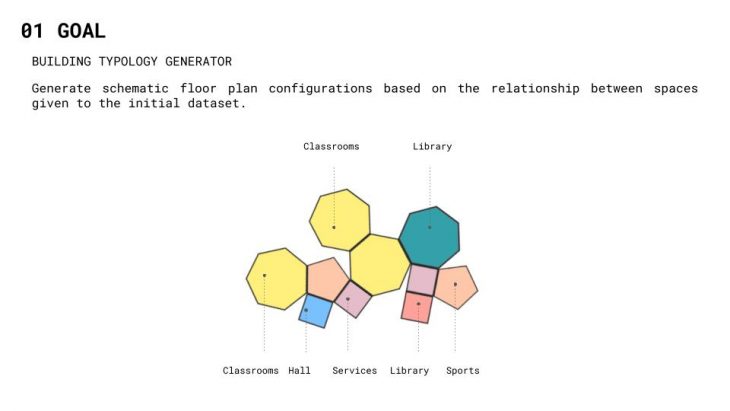
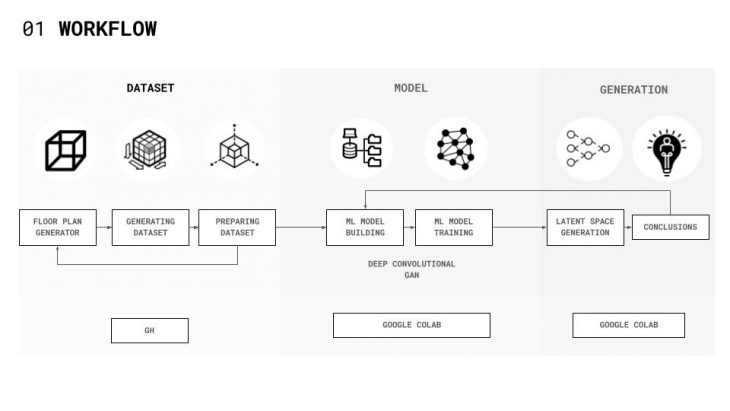
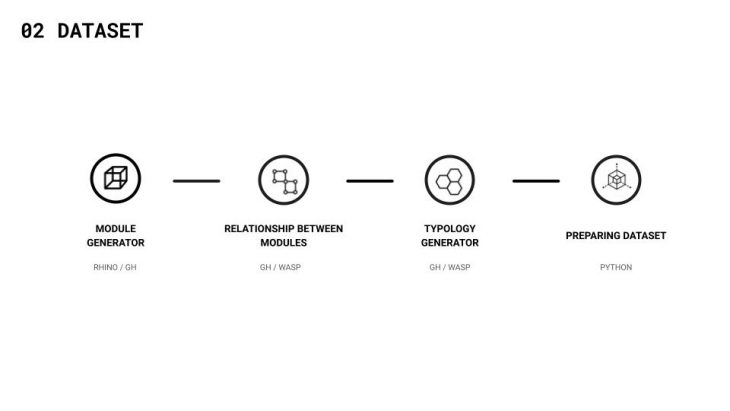
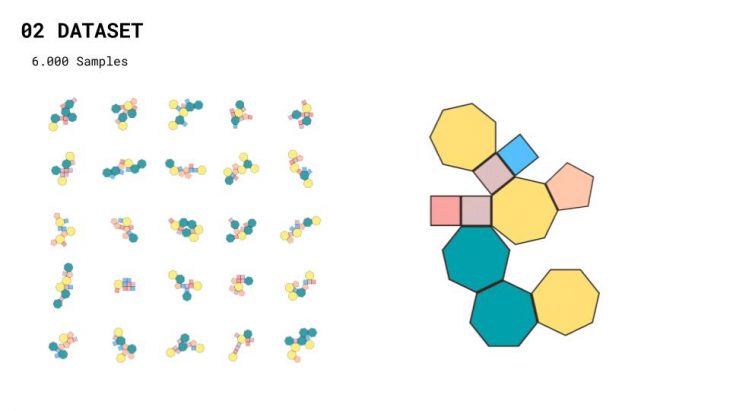
Generate schematic floor plan configurations based on the relationship between spaces given to the initial dataset.
Once the 6.000 dataset samples were created, it was used as an excuse for exploring DCGANs and their performance. Given a preconfigured model architecture, the hyperparameters of these models have been changed to find the best performance for the created dataset through several iterations.
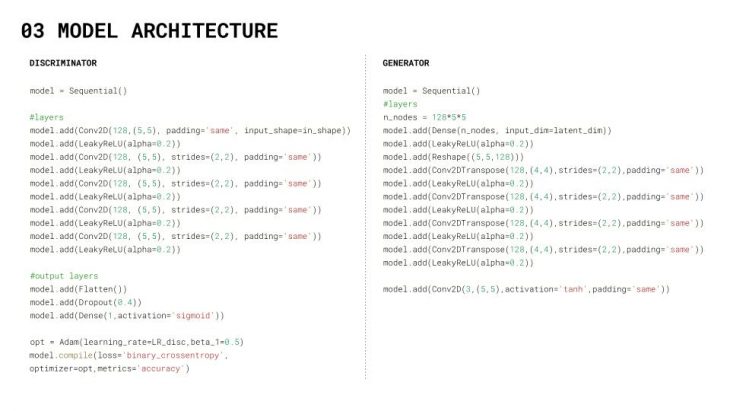
Here they are shown three of the most representative trials, which have helped to develop the exposed conclusions
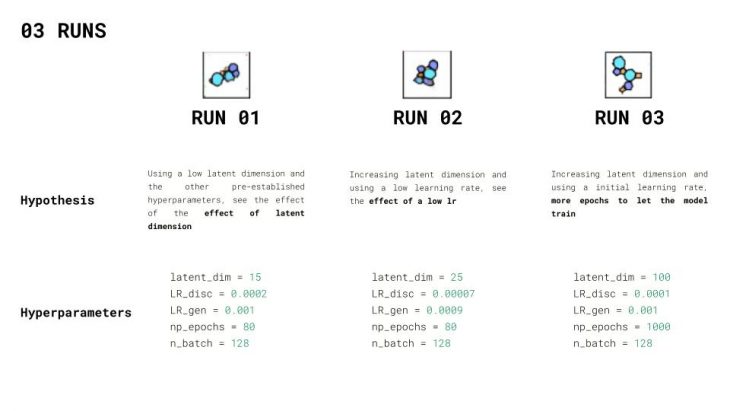
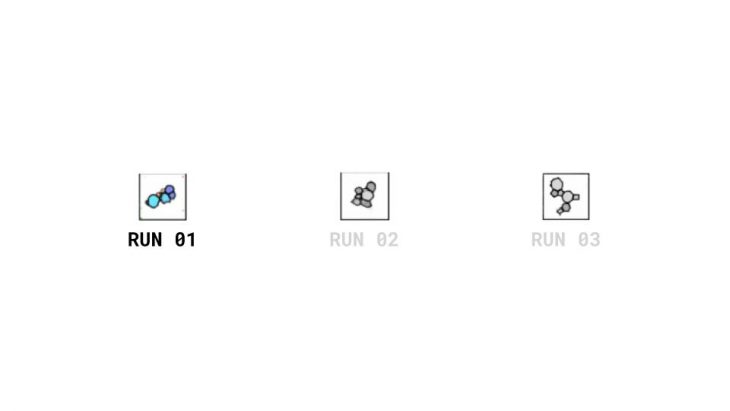
Exploration of how the model works when using a low latent dimension. The other hyperparameters are kept on a regular range to see the effect that the latent dimension has. It is expected to work well, as the latent dimension is understood as the input shape for the generator, which shouldn’t affect the behavior of the model.
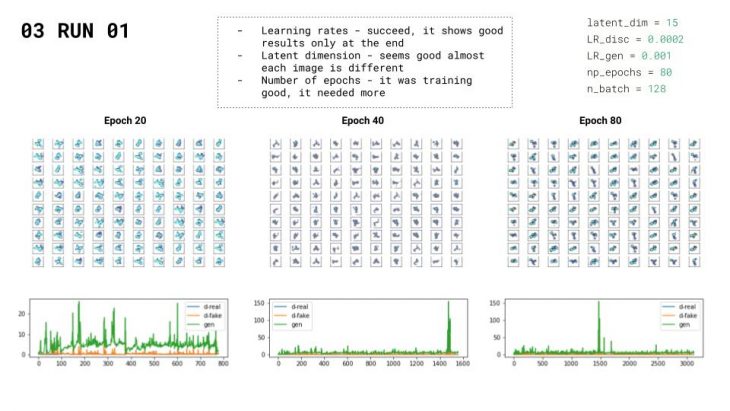
Run 01 shows higher diversity since it was run with the lowest latent dimension. The learning rate 0.001 seems to be a stable value, but only good results were shown at the end of the 80 Epochs. Overall it seems that the chosen values were promising it only needed to be run with a higher amount of epochs
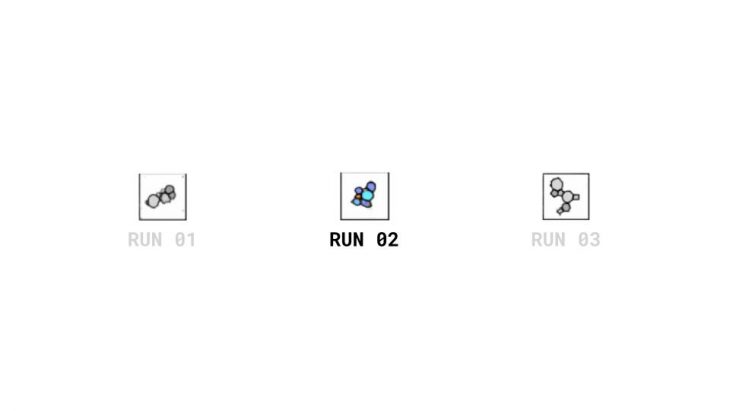
After seeing the effect of latent dimension it was increased to see the change of it. Both learning rates for the discriminator and the generator were lowered together. As it was seeing that sometimes the discriminator was falling to mode collapse and “winning” the generator, it was lowered a bit more. It is expected to work better
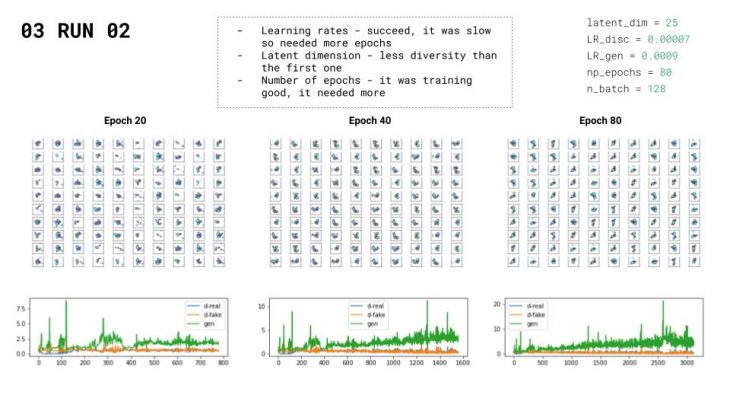
Run 02 shows a slightly increased later dimension and therefore a slightly less diversity than the first run. The learning rate was decreased to 0.0007 showings as well good results, but at a slower pace. It could have been run with more epochs, but it helped to conclude whether to increase or decrease the final values for the 3rd Run.
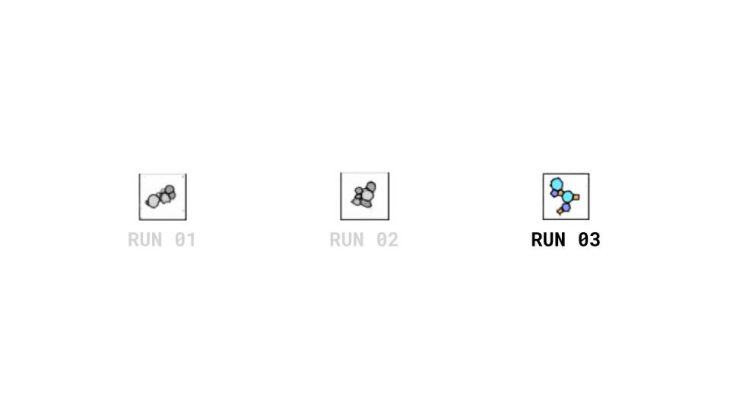
The previous iterations seemed to be stopped in the middle of good training. To let the model train, the number of epochs was increased. The latent dimension was also increased to 100.
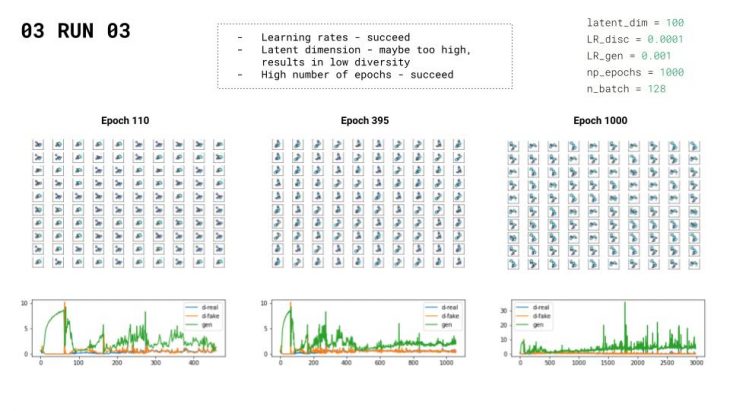
Run 03 shows an increased later dimension which led the results to a higher uniformity of options. The learning rate was proposed based on the balance between Run 1 and Run 2. Since the first Epochs were showing successful results, it was decided to run till the end of 1000 Epochs. Finally, Epoch 1000 was used as weight fur the final results. 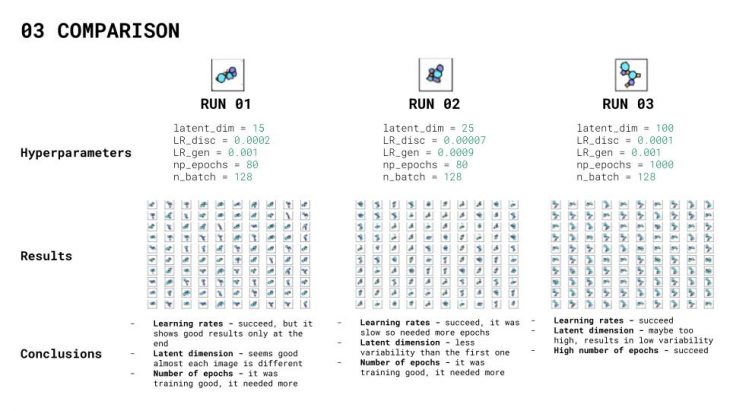
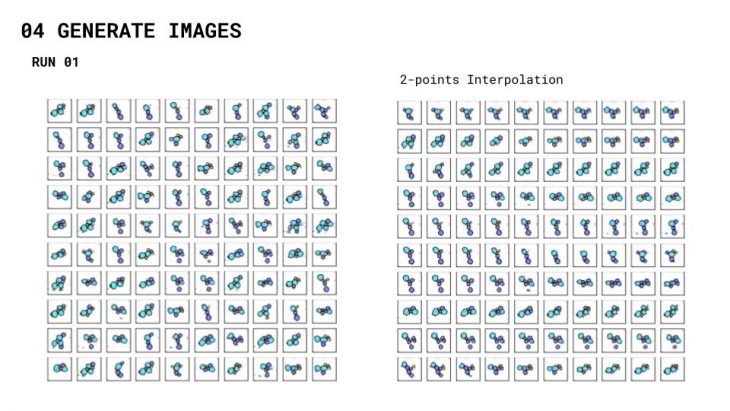
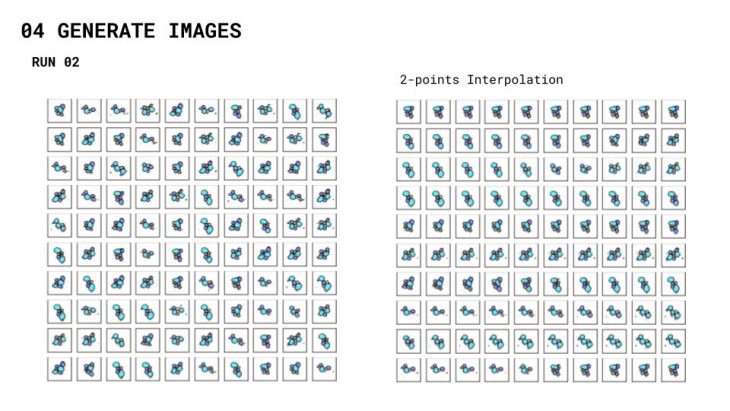
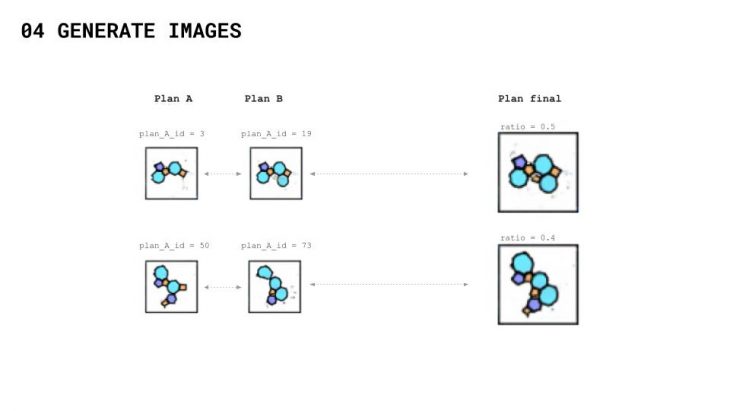
Conclusions
- The third run seemed to be the best one. Although it was trained for more epochs, in early stages it also looked better.
However, it is not as diverse as the first one. - The bigger the latent dimension the less variability it was obtained in the generations.
- Discriminator learning rate should be 1/10 generator’s learning rate because of the way the model is built, otherwise, it
comes quickly to mode collapse. Sometimes it could even work better to have a smaller than 1/10 (as in the second
run:0.00007-0.0009). - It needs a lot of time to train and a high number of epochs.
- Batch size did not affect that much in other iterations that were tested, although it should be balanced with the latent
dimension and learning rates in order not to collapse. - The model had some problems when generating the colors, especially blue, as in the initial dataset there wasn’t that much as
it was generated and blue was assigned to small squares, although the generator assigned it to big modules.
Click here for the Poster in PDF — > Poster
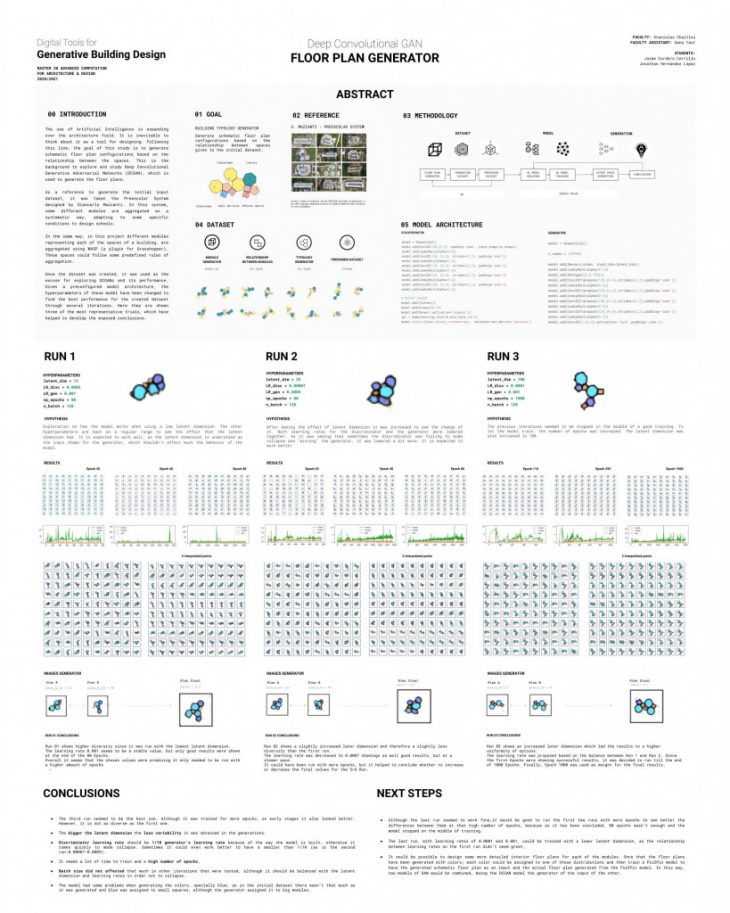
Next steps
- Although the last run seemed to work fine, it would be good to run the first two runs with more epochs to see better the differences between them at that high number of epochs, because as it has been concluded, 80 epochs were not enough and the model stopped on the middle of training.
- The last run, with learning rates of 0.0001 and 0.001, could be trained with a lower latent dimension, as the relationship between learning rates on the first run didn’t seem great.
- It would be possible to design some more detailed interior floor plans for each of the modules. Once that the floor plans have been generated with colors; each color could be assigned to one of those distributions and then train a Pix2Pix model to have the generated schematic floor plan as an input and the actual floor plan generated from the Pix2Pix model. In this way, two models of GAN would be combined, being the DCGAN model the generator of the input of the other.